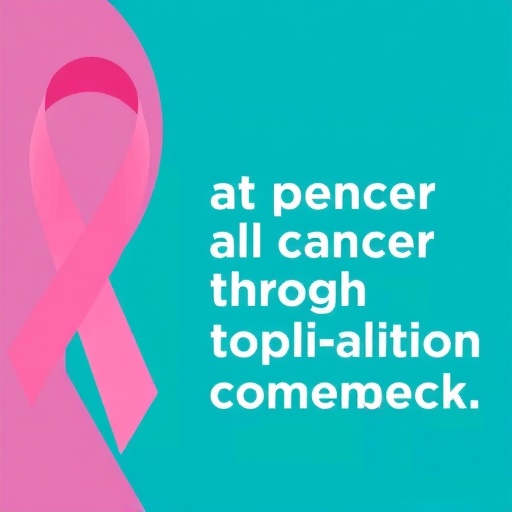Breast cancer remains one of the most prevalent health issues affecting women globally. Despite advancements in medical technology and awareness campaigns, there exists a significant gap in participation rates in breast cancer screening programs. The recent study conducted by Yaskolko et al. in 2025 delves into the effective strategies for implementing population health outreach aimed at increasing breast cancer screening. This research sheds light on the intricate dynamics between public health initiatives and patient compliance, emphasizing the necessity for innovative approaches to address the barriers that many women face.
The methodology employed in this study hinges on a multi-faceted outreach program designed to engage communities in breast cancer awareness and screening initiatives. Researchers sampled diverse demographics to understand how cultural, socioeconomic, and psychological factors influence screening rates. By utilizing a combination of surveys, focus groups, and interviews, the team was able to gather qualitative and quantitative data that highlight persistent gaps in breast cancer screening.
One of the compelling findings from the study reveals that misinformation surrounding breast cancer significantly impacts a woman’s decision to undergo screening. Many participants expressed uncertainty about the necessity and effectiveness of mammograms, showcasing the importance of tailored educational content. The research suggests that health information must not only be accessible but also relevant to diverse populations. This insight underscores the critical role that targeted messaging plays in altering perceptions and behaviors related to health screenings.
Moreover, the research identifies logistical barriers as a significant obstacle to screening. Factors such as accessibility to healthcare facilities and the availability of transportation significantly inhibit women’s ability to participate in these life-saving screenings. The study proposes novel solutions to alleviate these barriers, including mobile screening units and community partnerships that could facilitate easier access to health services. These pragmatic strategies could potentially transform the landscape of breast cancer prevention.
The emotional and psychological dimensions of cancer screening are also pivotal in understanding participation rates. Many women experience anxiety and fear when contemplating screenings, often magnified by the social stigma associated with breast cancer. The study emphasizes the necessity for support systems that can provide women with the reassurance and encouragement needed to undergo screening. Emotional intelligence training for healthcare providers can further enhance the patient experience, fostering an environment where women feel empowered to prioritize their health.
Technological advancements offer significant potential in bridging the gap in breast cancer screening participation. Digital tools, including smartphone applications and online platforms, can provide comprehensive information regarding screening processes, dispelling myths and encouraging women to take proactive steps towards their health. The research highlights how digital engagement can effectively reach younger demographics who are less likely to visit traditional health services. Such innovations could revolutionize outreach efforts, making crucial health information more accessible.
Community leaders and health advocates have a synergistic role in promoting breast cancer awareness. The study advocates for collaboration with local organizations to expand outreach efforts into communities that are traditionally underserved. Building trust within these communities can lead to more significant engagement and higher screening rates. By leveraging existing community networks, public health initiatives can effectively reach women who might otherwise remain uninformed about their screening options.
Policy implications stemming from this research are profound. To ensure that women receive appropriate screening opportunities, healthcare policies must prioritize funding for outreach programs and community-based initiatives. The establishment of frameworks that support innovative strategies for increasing screening rates can lead to substantial improvements in breast cancer outcomes. Policymakers hold the key to enabling systemic changes that promote health equity and access.
Training health care professionals in cultural competence can also significantly enhance the effectiveness of outreach programs. Educated providers who understand the unique challenges faced by various populations can tailor their communication strategies, making them more effective. The study underscores the need for continuous education and training within the healthcare workforce to ensure that all women receive respectful and empathetic care.
The rewards of increased breast cancer screening are substantial, both for individuals and society as a whole. Early detection leads to better treatment outcomes, and consequently, fewer deaths from the disease. This study serves as a clarion call for all stakeholders—healthcare providers, policymakers, and community leaders—to unite efforts toward enhancing the dialogues surrounding breast cancer. By addressing misconceptions, logistical hurdles, and emotional resistance, the infrastructure for screening can be transformed.
In conclusion, the comprehensive strategies outlined in Yaskolko et al.’s study provide a robust framework for increasing breast cancer screening rates. As the importance of early detection becomes ever clearer, the implementation of targeted outreach programs must be emphasized. Collective action from various social sectors is not just beneficial, but essential, to drive forward meaningful improvements in women’s health. By identifying and tackling the barriers present in screening uptake, we can ensure that advanced medical interventions lead to better outcomes for women affected by breast cancer.
Ultimately, the future of public health in breast cancer screening lies in our ability to innovate and adapt. The intersection of community engagement, policy reform, and healthcare access will define the next chapter in the fight against breast cancer. We stand at a pivotal moment, where each effort to educate and empower can yield immense dividends in the health and lives of countless women.
Subject of Research: Effective Implementation of Population Health Outreach to Increase Breast Cancer Screening
Article Title: Effective Implementation of Population Health Outreach to Increase Breast Cancer Screening
Article References:
Yaskolko, M., Reitz, C., Snider, C.K. et al. Effective Implementation of Population Health Outreach to Increase Breast Cancer Screening. J GEN INTERN MED (2025). https://doi.org/10.1007/s11606-025-09870-3
Image Credits: AI Generated
DOI: 10.1007/s11606-025-09870-3
Keywords: Breast Cancer, Screening, Public Health, Health Outreach, Health Equity, Community Engagement, Policy Reform, Healthcare Access, Emotional Well-being, Digital Tools, Cultural Competence, Early Detection, Misinformation, Logistics Barriers.
Tags: barriers to breast cancer screeningbreast cancer screening initiativescommunity engagement in health programscultural factors in health educationeffective public health campaignsenhancing mammogram participation ratesimproving women’s health compliancemisinformation in breast cancer awarenesspopulation health outreach strategiesqualitative research in healthcaresocioeconomic impact on health behaviortailored health education content





